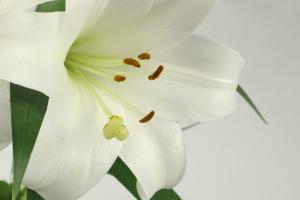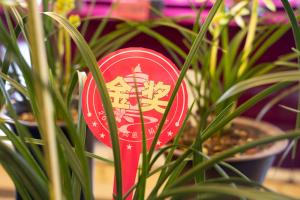Plant ash
plant ash is the ash of crops or flowers after burning. It can supplement potassium fertilizer, prevent rotten roots, heal wounds, promote rooting, keep warm... It's an artifact for raising flowers
How to raise flowers with plant ash
1. Wound sterilization plant ash has the function of sterilization and anti-inflammatory. When pruning, cutting and cutting, you can apply some plant ash on the wound, which can sterilize and anti-inflammatory the wound and prevent black rot, rotten roots and black stems

2. Supplement potassium fertilizer plant ash is rich in potassium fertilizer. When mixed with other soils, it can supplement potassium for flowers, making flowers bright and fruits huge

3. Promote root growth the soil mixed with plant ash can also accelerate the wound healing of flower roots or cutting branches and promote the germination and growth of roots. If the plant ash is mixed evenly in the soil, it can be directly used to raise flowers, but the proportion of plant ash should not exceed 1 / 5
note: it's OK to spread the plant ash directly on the surface of the basin soil, but the plant ash is too light to withstand the wind. It's best to press a layer of soil on the plant ash
how does Maifan stone grow flowers

Maifan stone
Maifan stone is used by many meat fans around Huahua. The meat raised with it is not easy to rot, and it is round and cute. In fact, Maifan stone can not only be used for meat, but also for other flowers. It can not only supplement flowers with major elements such as potassium, sodium, magnesium and phosphorus, but also contain 18 trace elements such as copper, iodine, iron, zinc, selenium and strontium, but also loosen air permeability and purify water quality. It's a flower artifact
1. Fleshy paving soil Maifan stone can be used as fleshy paving soil. A layer of Maifan stone with a thickness of about 0.5-1cm is paved on the top of the fleshy basin soil. The particle diameter can be large, such as 4-6mm. When watering, the nutrients in Maifan stone will penetrate into the soil with water and supplement the fleshy soil, which will make your fleshy grow faster, stronger and more beautiful than others! In addition, Maifan stone is heavier than other paving soil, so it cannot be washed away when watering. Moreover, Maifan stone pavement can also remove peculiar smell, prevent bacteria from breeding and prevent rotten roots
2. Purified water quality there are many voids on the surface of Maifan stone, which has strong adsorption capacity, so it can absorb impurities such as bleaching powder, heavy metals, chlorine and harmful microorganisms in tap water, and play the role of purifying water quality. Watering flowers with Maifan stone purified water for a long time can not only make the flower roots strong, the leaves luxuriant and the flowers colorful, but also enhance the disease, insect and frost resistance of flowers
therefore, before watering, you can put the water into a plastic bucket, sprinkle a handful of Maifan stone in the water, put it on the balcony, and then water the flowers with this water after 2-3 days

3. Loose ventilation Maifan stone can also be mixed with soil, which can loosen and breathe air and reduce the probability of rotten roots of flowers the particle diameter of Maifan stone can be 3-5mm

(author: Ermu Huahua male) I. prevention of root rot by mixing coarse sand with soil

Sand
sand is very common. It is a very good flower raising material. It never rots roots in the soil. It is still the first choice for cutting. The matrix can cut everything. It can also effectively prevent mosquitoes when laid on the basin surface. It is really useful! More than 0.5mm is coarse sand, which can be paved and mixed with soil. Less than 0.5mm is fine sand, which can be cut
1. The water permeability of sand is particularly good, so if you want to raise flowers without rotten roots, you must mix some sand in the soil, especially the coarse sand with particle diameter greater than 0.5mm, together with peat soil and garden soil to form many gaps, which can quickly discharge the excess water and avoid rotten roots

2. If you want to raise any flowers without rotten roots, you should mix some sand. Huahua recommends the soil matching scheme for most flowers. There is no lack of sand in it succulent plants: river sand: peat soil: Perlite: vermiculite = 0.5:2:0.5:2 grass and flower plants: river sand: garden soil: compost:: plant ash = 2:4:4:1 foliage plants: river sand: humus soil: garden soil = 2:4:4 
large plants: coarse sand: garden soil: rotten organic fertilizer = 2:6:2 II. Spreading basin surface with coarse sand to prevent mosquitoes raising flowers in summer is easy to attract insects. It's so annoying. Later, Huahua's second aunt told Huahua a good way, that is, lay a layer of sand on the basin to block the contact between insects and the soil. Insects can't lay eggs in the soil. Insects are really gone III. fast rooting of fine sand cutting sand is also one of the best substrates for cutting, especially for woody plants such as rose, gardenia, jasmine, triangle plum and Fig. when cutting flowers with sand, it is almost 100% rooting, but 
tip: whether it's the sand on the main road, the sand on the construction site or the sand on the beach, you can take it home and wash it


Peanut shell
peanut shell is a good material for raising flowers. You can raise all kinds of flowers, especially orchids. Orchids are raised with plant materials first, while orchids raised with peanut shell have strong roots and many flowers. Therefore, people who raise orchids encounter peanut shell like seeing gold how to raise flowers with peanut shells1. Crush the peanut shell in advance, the more broken the better

2. Put the peanut shell into a container, soak it in water for a few days, and pay attention to changing the water repeatedly

3. When there is water in the peanut shell bubble, pour out the excess water, add some brown sugar solution or em starter, and stir evenly

4. Put the stirred peanut shell into a large plastic bag, tie it up and put it in the sun

5. When the peanut shell is black and gray, and it breaks when pinched, it can be used to raise flowers

6. One part of the retted peanut shell is mixed with three parts of peat soil (rotten leaf soil), which is loose, breathable and nutritious. It can be used to raise most flowers such as orchids and Clivia, and the roots grow very strong

More
Related articles

 how many times do yo...
how many times do yo... how many planted tre...
how many planted tre... how many pine trees ...
how many pine trees ... how many pecan trees...
how many pecan trees... how many plants comp...
how many plants comp... how many plants can ...
how many plants can ... how many plants and ...
how many plants and ... how many pepper plan...
how many pepper plan...

































